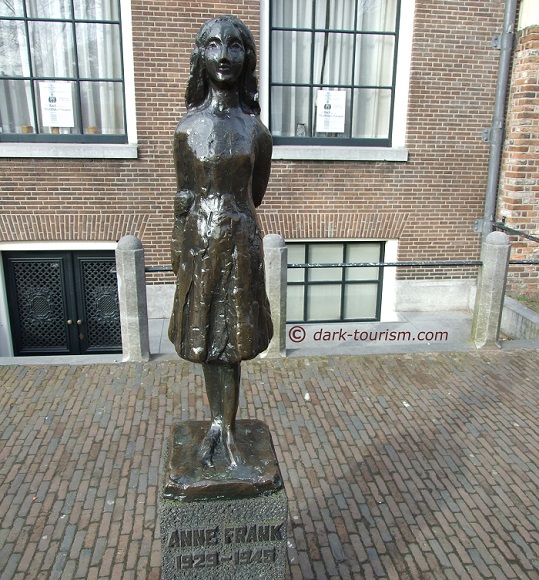On this Day, 12 June, it is Anne Frank‘s birthday. She would have been 91 today, so could quite possibly have been still alive now had she not been discovered, deported and eventually killed during the Holocaust.
Until August 1944, Anne and her Jewish family had been living successfully in hiding in Nazi-German-occupied Amsterdam, but were somehow betrayed, so that the SS did find them after all and deported them first to the transit camp of Westerbork, then to Auschwitz. Anne and her sister Margot were later transported to Bergen-Belsen, where both died, most likely of typhus, probably in late February or March 1945, so just weeks before the camp was liberated by British troops, and about two months before WWII was over and the Third Reich defeated.
While in hiding, Anne wrote the diary that was later published by her father, who was the only member of the family to survive the war and Auschwitz. The initially somewhat bowdlerized diary went on to become one of the best-known and best-selling stories related to the Nazi persecution of Jews and the Holocaust. It’s often the first encounter young people have with the whole topic these days.
The house on Prinsengracht in which the family had been hiding has been turned into a memorial museum and is now one of the most popular dark-tourism destinations worldwide. The hideout in the annexe has been restored, and the story is retold at the site in a captivating fashion. Yet the enormous visitor numbers somewhat detract from the atmosphere.
Inside the Anne Frank House photography was not allowed, but I can give you a photo of a small Anne-Frank statue that stands just a hundred yards to the south, in front of the Westerkerk church, also by the banks of the Prinsengracht canal in Amsterdam …
[Note: the photo and part of the text were taken from my archives for the Facebook page I used to run on that platform until it/I was purged.]




